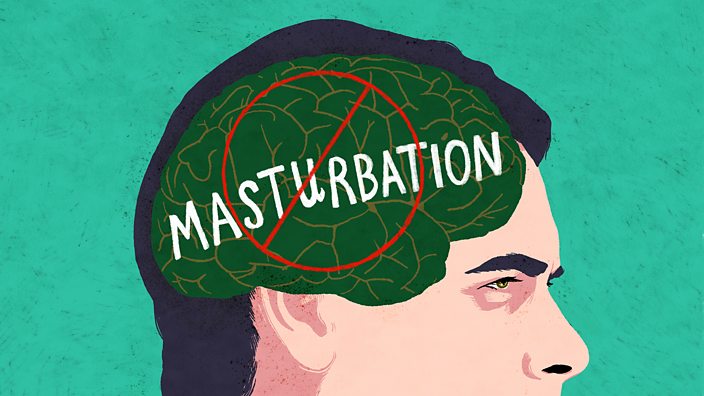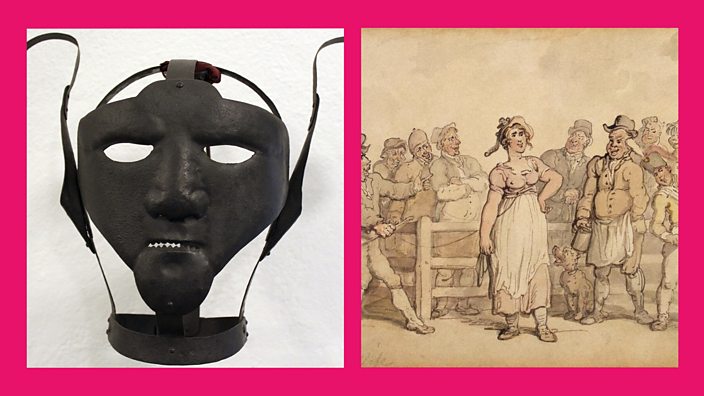 Anagoria / Creative Commons 3.0 / Thomas Rowlandson
Anagoria / Creative Commons 3.0 / Thomas Rowlandson'Silencing masks' and 'wife auctions': What life used to be like for women
These historical objects will make you glad you weren't alive then
March is Women's History Month and let's take a moment to consider how things have changed for women in Britain.
A hundred (and one) years ago, women had just won the vote. Two hundred years ago, men would sell their wives at public auctions. Three hundred years ago, unmarried women were forced to give up their babies.
And 500 years ago, women who stood up for themselves against the patriarchy could be silenced with an iron mask that stopped them talking or eating.
Life has changed immeasurably for women today in the UK and around the world. Even though things still aren’t perfect – gender pay gap, domestic violence and female genital mutilation are just a few battles still being fought – we’ve come further than our ancestors could have dreamed.
The book, A History of Women in 100 Objects by Maggie Andrews and Janis Lomas, reminds us of this on a visual level. It examines the medical, cultural and general objects that symbolise female progress.
"Everyday items can tell us so much," says Krista Cowman, a professor of history at Lincoln University. "That's why social history museums are so popular. It's a physical reminder of how far we've come, from girdles to sanitary care."
We've picked out items from the book that demonstrate the hard reality of being a woman throughout history – from punishments to vibrators.
Scold’s bridle
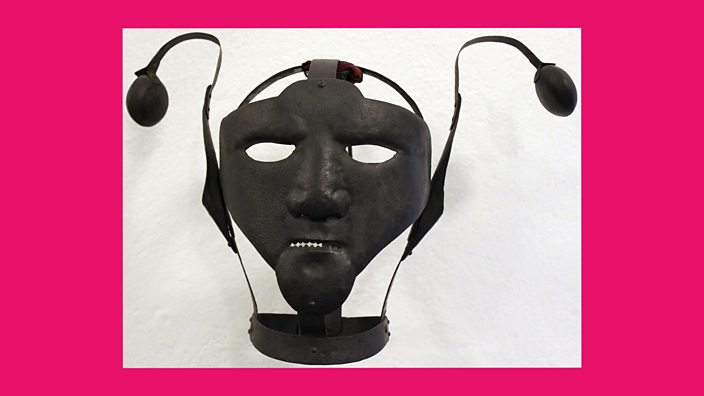 Anagoria / Creative Commons 3.0
Anagoria / Creative Commons 3.0The bridle is a heavy metal frame that was used throughout Britain in the 16th century to silence women who had basically spoken out against the patriarchy.
In 100 Objects, Richard Dhillon writes: “It was never an officially sanctioned legal practice but surviving source material suggests it was used as punishment for a ‘scold’ – a term applied to women who exercised irreverent or unruly speech, defying patriarchal expectations, or who challenged accepted notions of womanhood.”
By that definition we are #AllScolds.
Wife sales
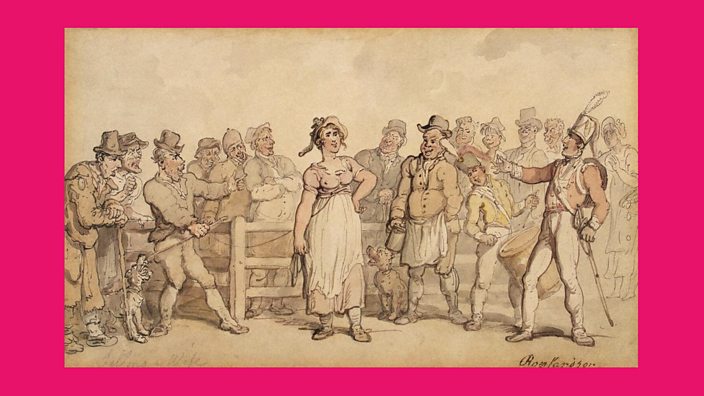 Thomas Rowlandson
Thomas RowlandsonBack in the 18th and 19th centuries, some men would sell their wives in public auctions when they wanted a divorce. It wasn’t fully legal, but it was common – it’s even how Thomas Hardy starts his novel The Mayor of Casterbridge.
“After the sale – which could be vetoed by the wife – was agreed, lawyers sometimes drew up a receipt recording the exchange, transfer of rights and obligations,” explains Maggie Andrews. “They have come to be seen as a form of divorce for the poorer classes.”
Force-feeding equipment
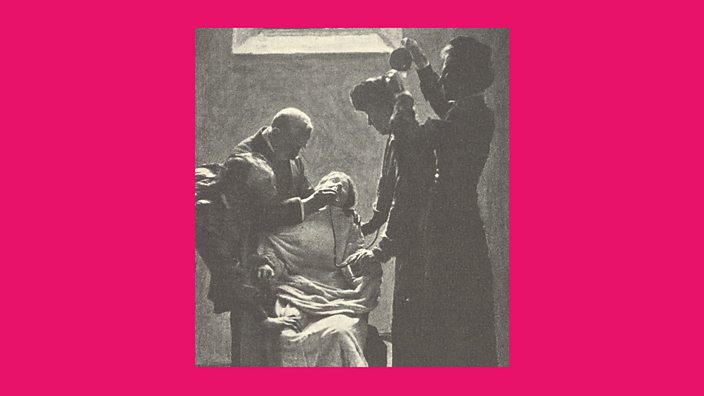 The Suffragette / Sylvia Pankhurst / 1911
The Suffragette / Sylvia Pankhurst / 1911In the early 20th century, suffragettes fighting for the vote were often imprisoned. Many refused food in protest, and so the authorities forcibly fed them.
Janis Lomas writes: “This involved inserting a rubber tube 45cm down the throat or via one nostril into the stomach. This usually caused gagging, and often, once the tube was removed, the woman vomited.” It was repeated three times a day, and could cause severe diarrhoea, vomiting and bruising.
Early twentieth-century medical vibrator
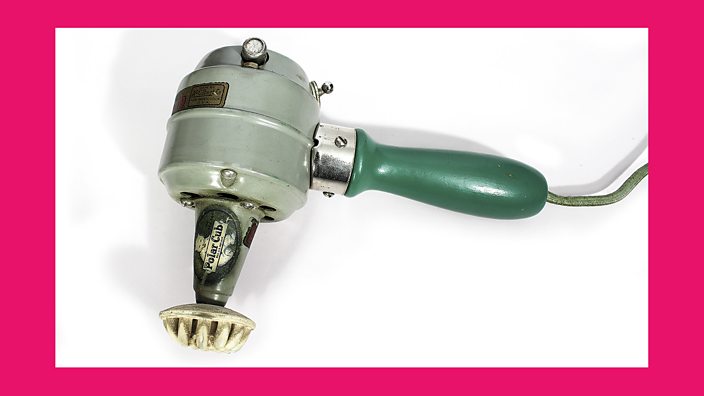 A History Of Woman In 100 Objects / Maggie Andrews and Janis Lomas
A History Of Woman In 100 Objects / Maggie Andrews and Janis LomasAs you can guess from this photo, the first vibrators were not designed with the female orgasm in mind. They were meant to massage muscles and relieve tension – for both men and women.
“Vibrators and female masturbation remained shrouded in euphemism and shame for much of the 20th century,” writes Maggie Andrews, “but the work of sexologists in the period following the Second World War began to change this.”
London Foundling Hospital token
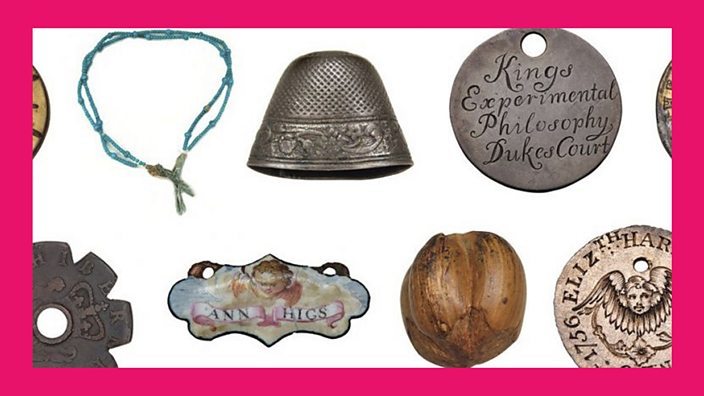 Foundling Museum
Foundling MuseumBack in the 1700s, unmarried women who were unable to keep their babies left them at the London Foundling Hospital. They were asked to leave a token with their child so that they could identify their baby at a later date. Today, there are now 18,000 tokens at the Foundling Museum in London.
“They are a poignant reminder of the difficulties single mothers faced in 18th- and 19th-century Britain,” writes Janis Lomas. “Sadly, records show that only two children were ever reclaimed by their mothers.”
Rubber bloomers
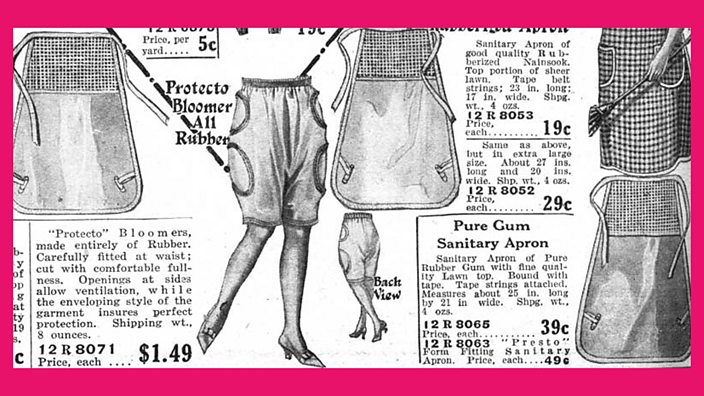 The Charles William Stores catalog, 1922
The Charles William Stores catalog, 1922“Before sanitary towels, women had no option but to initially use leaves and grass, or whatever scraps of material or rags were available, which were boil washed and reused,” writes Janis Lomas.
“By the end of the 19th century, American women could also buy rubber bloomers to ensure there was no leakage. Sold for $13.50 per dozen, they were advertised as reversible and with side openings for ventilation.”
It was only in the 1930s that tampons were made widely available to women - a welcome relief.
18th-century obstetric forceps
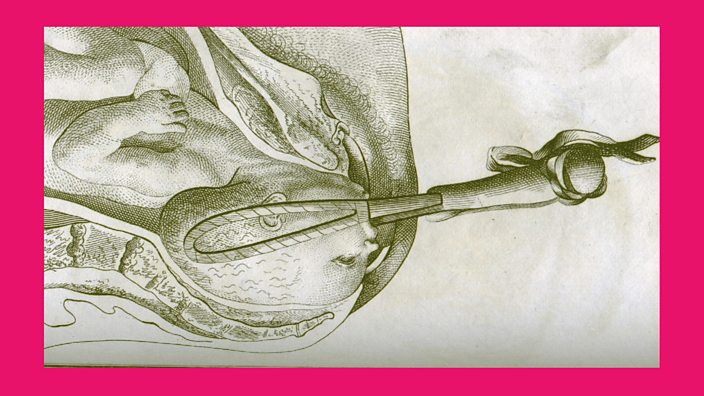 William Smellie, 1792
William Smellie, 1792When the forceps were invented in the 16th century, they saved many lives. But by the 18th century, there was heated debate around their use as midwives reacted against the increased involvement of male doctors in childbirth - disrupting what they saw as a natural process.
While doctors condemned midwives as dirty and incompetent, they hit back accusing doctors of overusing forceps so they could charge for expensive, and in their view unnecessary, surgery.
“Forceps were used more and more frequently,” writes Gill Thorn. “The blades became longer, allowing them to be used higher in the pelvis, ostensibly to shorten labour and spare the mother pain, although this increased the risk of brain injury to the baby and trauma to the mother.”
Today, a report suggests that fewer than half of births in Britain need medical intervention such as caesareans, ventouse or forceps.
 Getty Images
Getty ImagesIn the last 101 years since women were given the vote, and in centuries before that, life has changed drastically – and thank god.
Most of us no longer have to contemplate being sold or forced into giving up our children, and new period innovations have fortunately rid us of rubber bloomers.
But it’s important that we remember our history as women, and the fact that there are still real issues of sexism and inequality.
As Prof Cowman says, "We might not use scold's bridles anymore, but women who speak out are still shamed on Twitter by trolls, telling them how ugly and stupid they are."
We're a lot better off than our ancestors of centuries past, but when it comes to equality? There's still a way to go.
A History of Women in 100 Objects by Maggie Andrews and Janis Lomas is published by The History Press.
Originally published 29 March 2018.











